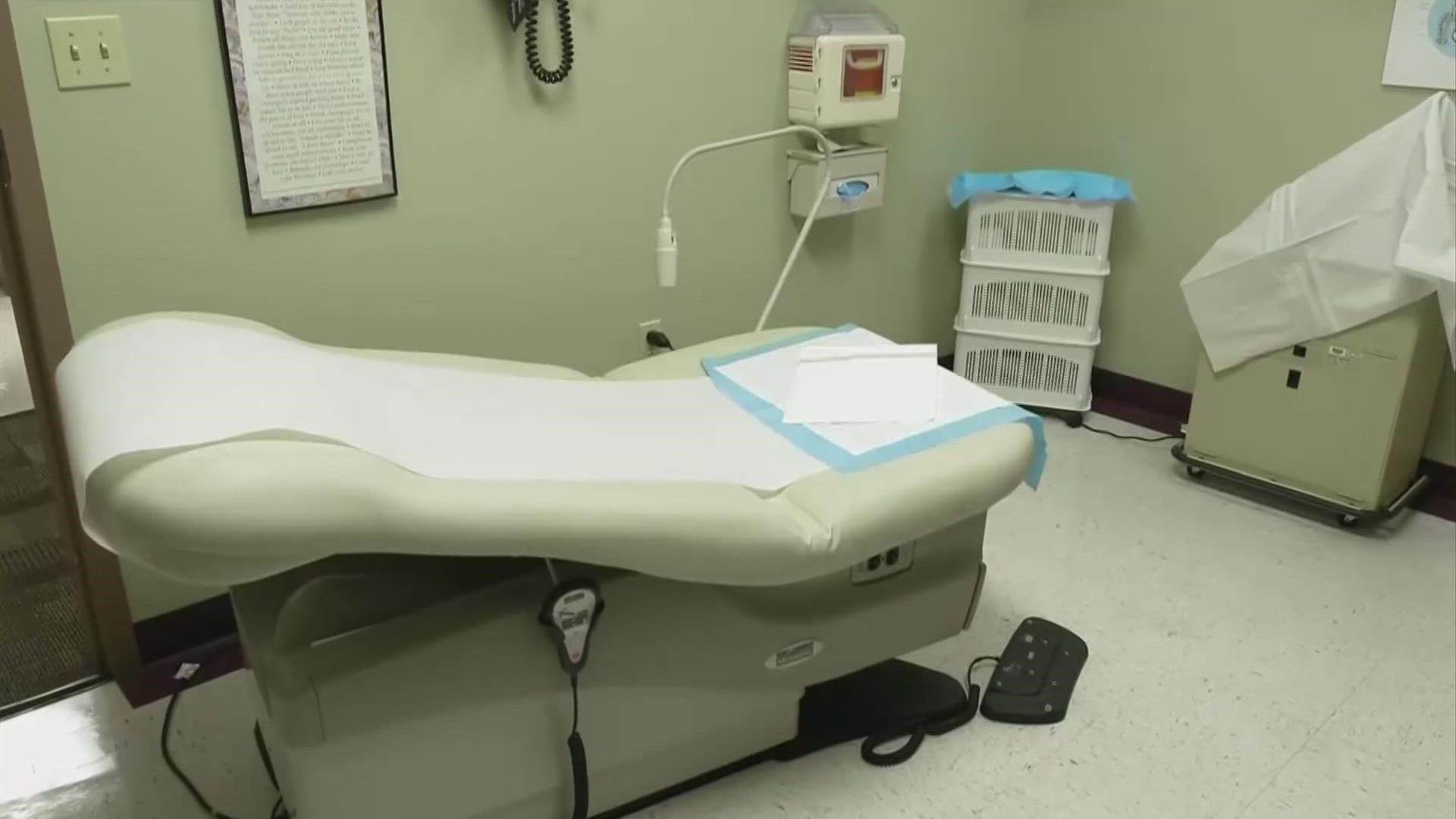COLUMBUS, Ohio — In 2020, medical providers performed 20,605 abortions in Ohio, the majority of them for state residents.
That’s according to data from the Ohio Department of Health.
The data also paints a picture of the women most likely to get an abortion in the state. On average, the woman is non-white, in her 20s and has never been married. The procedures also are most often performed within the first nine weeks of pregnancy.
Right now, Ohio has nine abortion clinics throughout the state, and leaders with Planned Parenthood have been working to make sure Ohioans know the doors are still open.
“A lot of people are really confused, and that’s one of the reasons why I keep saying abortion is legal in Ohio right now because, you see a headline, and especially with the confusion of the leak of the decision, that’s never happened before, so some people are thinking that means it’s right now illegal in Ohio, but that’s not the case,” said Aileen Day, director of communications for Planned Parenthood Advocates of Ohio.
Day also points out that, even if a ban were to be enacted, Planned Parenthood would still be open to offering other services, including STI testing, wellness checks and birth control access. In fact, abortions make up only 3% of services offered.
And dealing with legal restrictions on abortion in Ohio is nothing new for Planned Parenthood.
“Here in Ohio, we have had 30 abortion bans and restrictions in the past 10 years, so we are used to dwindling access, and so, we already have hired patient navigators at Planned Parenthood who help patients figure out how to get abortion care,” Day said. “And so, we’ve expanded that program in the last year when we saw the writing on the wall with Roe falling, and so, now that patient navigator program has expanded to helping patients get care out of states.”
And that travel to other states is part of the focus of two recent studies involving researchers from The Ohio State University.
“We wrote a paper saying, what would happen to patients in Ohio who needed abortion care if the trigger ban passed and if Roe v. Wade were to be overturned by the Supreme Court,” said Dr. Alison Norris, associate professor for the OSU College of Public Health and College of Medicine.
The studies were conducted through the Open Policy Evaluation Network, which is a research collaboration involving several Ohio universities.
In one study, using population data from the U.S. Census and the locations of abortion clinics, researchers found that people living in all 88 counties have access to an abortion clinic within 99 miles of where they live.
However, if Ohio were to ban abortion, and those women traveled to Michigan or Pennsylvania for abortions, their travel time would be seven times longer. If Michigan and Pennsylvania also were to ban abortion, that would make the travel time 10 times longer.
“People who have resources, financial and social resources, they will be able to travel to a state that still has abortion care,” Dr. Norris said. “It will be inconvenient for those people, but as long as clinics are open in other places, they’ll be able to get there. For people who are poor, the hurdle of having a car, driving hundreds of miles, potentially an overnight stay, childcare, missing work, those can become insurmountable for people who don’t have a lot of financial resources. So this really does become a stark inequity where people who have money will still be able to get this very ordinary, safe healthcare, and people who don’t have money, will be denied that opportunity.”
Dr. Norris points out that women of color who are low-income will feel the most impact. She cites a study showing that abortion is 14 times safer than childbirth, which could push a woman into a riskier health situation if abortion is not an option.
“Black people who are giving birth are at much higher risk of having a fatal event, having a death in birth than are White people who are giving birth,” she said. “And so, we’re piling burden and risk upon burden and risk. So our finding that people have to travel further for care impacts Black people in a really terrible way, and the justice implications of that go far beyond a travel burden.”
That travel burden already is being felt in some states with restrictive abortion laws. In the other study Dr. Norris discussed, researchers found only 3 percent of women travel out of state when their states have supportive abortion laws, In comparison, up to 25 percent of women might travel out of state to access an abortion if they live in a state with restrictive laws.
“The consequence of that phenomena, that people are often in a state and surrounded by states that have restrictive laws, means that if there is a big change, like in the upcoming Dobbs decision, and Roe v. Wade is overturned, people may be in geographic areas that are huge, where there’s no access to abortion,” Dr. Norris said. “And so, the travel burdens that we’ve already spoken about, are going to be multiplied and multiplied for millions of people across the country.”

